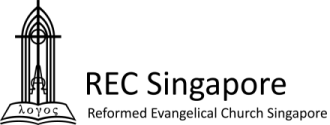Bahan Alkitab: Exodus 28, Exodus 39:1- 31, Numbers 3:5-9, Exodus 29:1 – 11, Leviticus 8:1- 10:5
Tanggal: 31/01/2021
Ringkasan:
1. God commanded Moses to build the tabernacle so He could dwell in the midst of his people.
2. Because sinful people could not enter the presence of the holy God, they needed someone to go for them, a mediator to seek forgiveness for their sins and reconciliation with the Lord. God chose Aaron and his descendants to be priests. God ordered the Levites to camp around the tabernacle, with Moses and the priests in front of the entrance.
3. Following God’s detailed instructions (Exodus 28), the workmen made beautifully ornate outer garments for Aaron, the high priest, out of the same expensive materials used in the tabernacle.
4. Each piece had a purpose and was rich with symbolism.
5. Using the phrase “as the LORD commanded Moses” seven times for emphasis, Exodus 39 attests that the workmen precisely carried out the directions God had given to Moses. This special clothing set the priests apart from the other people and from everyday activities.
6. Our pastors are not priestly mediators. They do lead us in worship, offering prayers on our behalf and preaching God’s Word to us, but they do not offer sacrifices for our sins. Jesus Christ is the Great High Priest and only Mediator between God and man. He made the final, all-sufficient sacrifice for sin by his death on the cross.
7. God did not choose Aaron and his sons to be priests because they were better than other people. Aaron was a sinner and was not worthy to enter the presence of the holy God. lt was only after he had offered a sacrifice for his own sins and was clothed in the garments God had prescribed that he could enter the holiest part of the tabernacle. So it is with us. Our sins would separate us from God forever if Jesus Christ had not offered himself as a sacrifice for us and clothed us in his righteousness.
Serving as representatives
1. Before the priests could wear the sacred garments and perform their duties in the tabernacle, the Lord required them to be consecrated, or set apart, for his service.
2. The consecration ceremony emphasized the priests’ personal need for cleansing and atonement. With every Israelite watching, Moses began by washing Aaron and his sons at the bronze basin in the tabernacle courtyard- symbolizing the removal of the sins that defiled the priests-then dressing them in the priestly clothing God had designed. Moses also offered three animal sacrifices.
3. The priests laid their hands on its head, identifying themselves with the animal and symbolically transferring their guilt to it. During the third sacrifice, Moses put some of the ram’s blood on the lobe of each priest’s right ear, the thumb of his right hand and the big toe of his right foot. This symbolized the priests’ being wholly consecrated to God, from head to toe. Those whom God had chosen to represent the people before him as priests also needed a representative, or substitute, because they themselves were sinners.
4. The contrast with our great High Priest is striking. Jesus Christ did not need to be cleansed or to offer sacrifices for himself, for he was sinless.
5. One day, perhaps revealing a prideful spirit because of their new position, Nadab and Abihu (first 2 sons of Aaron) grabbed their censers and offered incense before the Lord. Fire again came out from his presence, but instead of consuming a sacrificial substitute for sinners, this time it consumed the two who had chosen to disobey the holy God by worshiping him in their own way.
Ayat Hafalan:
Exodus 29:45-46
I will dwell among the people of Israel and will be their God.
And they shall know that I am the Lord their God, who brought them out of the land of Egypt that I might dwell among them. I am the Lord their God.


